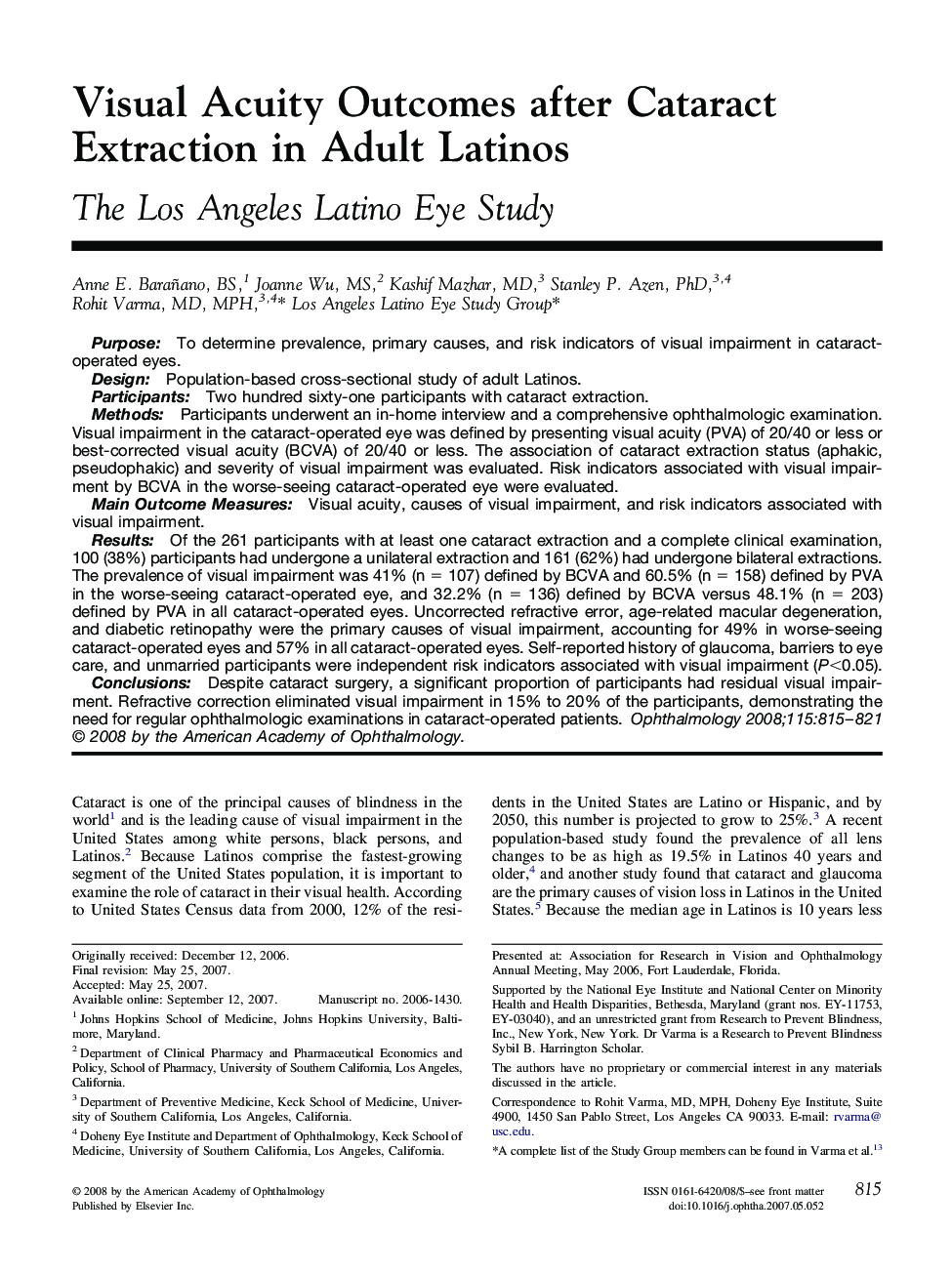| Article ID | Journal | Published Year | Pages | File Type |
|---|---|---|---|---|
| 4029295 | Ophthalmology | 2008 | 7 Pages |
PurposeTo determine prevalence, primary causes, and risk indicators of visual impairment in cataract-operated eyes.DesignPopulation-based cross-sectional study of adult Latinos.ParticipantsTwo hundred sixty-one participants with cataract extraction.MethodsParticipants underwent an in-home interview and a comprehensive ophthalmologic examination. Visual impairment in the cataract-operated eye was defined by presenting visual acuity (PVA) of 20/40 or less or best-corrected visual acuity (BCVA) of 20/40 or less. The association of cataract extraction status (aphakic, pseudophakic) and severity of visual impairment was evaluated. Risk indicators associated with visual impairment by BCVA in the worse-seeing cataract-operated eye were evaluated.Main Outcome MeasuresVisual acuity, causes of visual impairment, and risk indicators associated with visual impairment.ResultsOf the 261 participants with at least one cataract extraction and a complete clinical examination, 100 (38%) participants had undergone a unilateral extraction and 161 (62%) had undergone bilateral extractions. The prevalence of visual impairment was 41% (n = 107) defined by BCVA and 60.5% (n = 158) defined by PVA in the worse-seeing cataract-operated eye, and 32.2% (n = 136) defined by BCVA versus 48.1% (n = 203) defined by PVA in all cataract-operated eyes. Uncorrected refractive error, age-related macular degeneration, and diabetic retinopathy were the primary causes of visual impairment, accounting for 49% in worse-seeing cataract-operated eyes and 57% in all cataract-operated eyes. Self-reported history of glaucoma, barriers to eye care, and unmarried participants were independent risk indicators associated with visual impairment (P<0.05).ConclusionsDespite cataract surgery, a significant proportion of participants had residual visual impairment. Refractive correction eliminated visual impairment in 15% to 20% of the participants, demonstrating the need for regular ophthalmologic examinations in cataract-operated patients.
